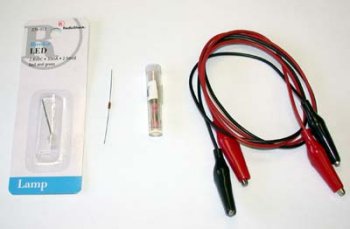
The basic components needed.
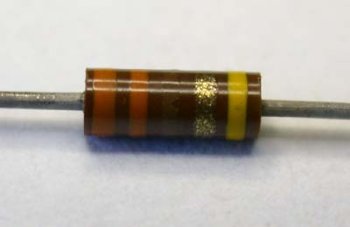
Radio Shack sells these in 5 packs for $0.99.
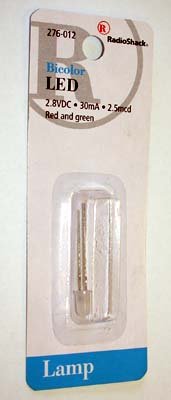
The LED is found in one of their parts drawers. The don't put components on hooks anymore.
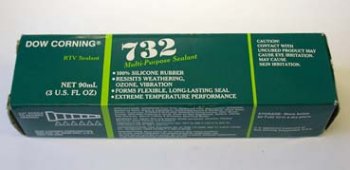
You can use RTV to seal the tube if you're not in a hurry. This is what I used on my first one.
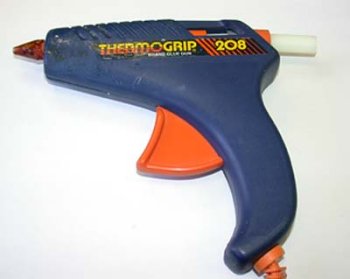
A hot melt glue gun works very well and is quick. This is what I used this time.

Here's a close-up of the LED with the leads trimmed down. Notice the flat on the right side. This is the negative terminal.
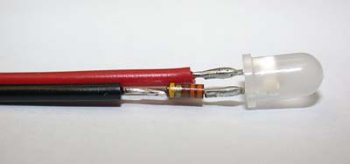
Solder the resistor to one of the LED leads. Doesn't matter which one.
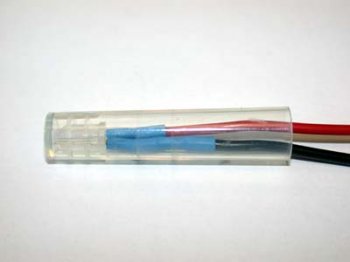
Put heat shrink over the ends, then slip the entire thing into the plastic tube.
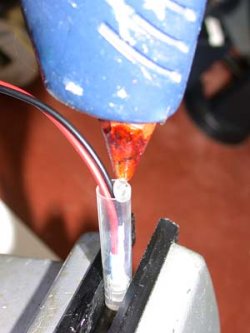
This glue is HOT. If it contacts your skin, it will burn and will get you again when you undoubtedly try to peel if off with the other hand. Don't ask how I know!

Squirt enough glue into the tube to seal the end. No need to get it all the way to the end.
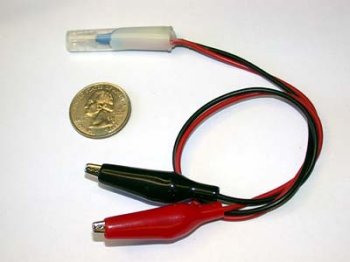
Here's what you end up with. The quarter gives you an idea of the size.
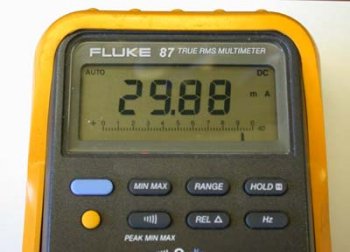
Well, did we calculate correctly? Pretty close to 30 mA!
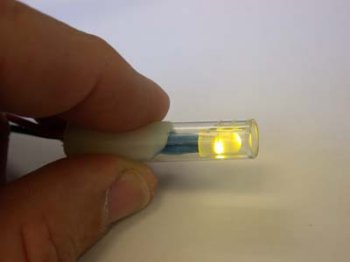
Now you see why I went with a clear tube. You can see the LED from the side.
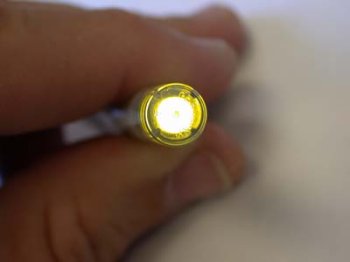
Really bright on the end due to the LED lens.

Reverse the clip leads, the light turns red.
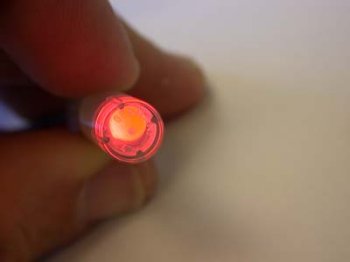
You almost wired something up backwards but your test light saved you.